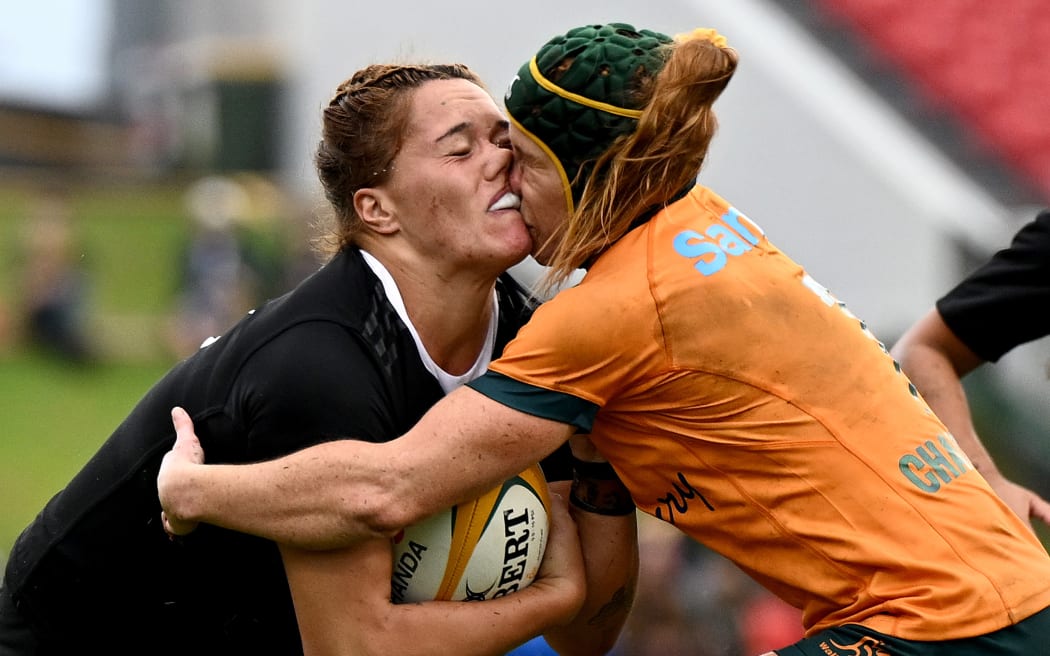Sports
Flashing Mouthguards to Enhance Player Safety at Rugby World Cup

Mouthguards equipped with LED technology that illuminate when a player experiences a significant head impact will debut at the 2023 Women’s Rugby World Cup, commencing next week. These innovative mouthguards will flash red to signal potentially severe impacts that could lead to concussions, prompting match officials to halt play and allow for immediate head injury assessments.
Implementation and Future Plans
The introduction of this technology marks a significant advancement in player safety protocols. Following their use in the upcoming women’s tournament, these mouthguards are set to be incorporated into the men’s Rugby Championship next year. The technology has already been trialed successfully in this year’s Major League Rugby, showcasing its effectiveness in real-game scenarios.
Dr. Lindsay Starling, World Rugby’s science and medical manager, emphasized that this new system surpasses the existing method, which relies on Bluetooth to detect severe impacts. Under the previous system, alerts could take several seconds to reach the match day doctor. The immediate visibility of the flashing mouthguard aims to enhance awareness about head injuries not only among players and officials but also for spectators in stadiums and viewers watching at home.
“Match officials and players will be able to see that this player has sustained a big head impact because their mouthguard is flashing red,” Starling said. “It will create awareness about head injuries and concussions in the stands and for fans at home.”
Potential for Foul Play Detection
The technology’s applications extend beyond concussion management. Dr. Eanna Falvey, chief medical officer for World Rugby, noted that nearly all players participating in the World Cup will wear the new mouthguards, with the exception of two players who have braces. Starling suggested that the data collected from these mouthguards could also aid in identifying foul play during matches.
Despite the promising capabilities, Starling cautioned against an over-reliance on the data. “There is a world in which the data from the mouthguard can start to come into play a little bit more with foul play,” she explained. “But what everybody needs to understand is that in the same way a player can get concussed from a pretty small head impact, foul play can occur without registering anything substantial.”
As the Rugby World Cup approaches, the implementation of these advanced mouthguards highlights a growing commitment to player safety and injury prevention in rugby. The anticipation surrounding their use reflects a broader trend in sports towards enhanced monitoring technologies aimed at safeguarding athletes.
-

 World4 months ago
World4 months agoTest Your Knowledge: Take the Herald’s Afternoon Quiz Today
-

 Sports4 months ago
Sports4 months agoPM Faces Backlash from Fans During Netball Trophy Ceremony
-

 Lifestyle4 months ago
Lifestyle4 months agoDunedin Designers Win Top Award at Hokonui Fashion Event
-

 Entertainment4 months ago
Entertainment4 months agoExperience the Excitement of ‘Chief of War’ in Oʻahu
-

 Sports4 months ago
Sports4 months agoLiam Lawson Launches New Era for Racing Bulls with Strong Start
-

 World5 months ago
World5 months agoCoalition Forms to Preserve Māori Wards in Hawke’s Bay
-

 Health4 months ago
Health4 months agoWalking Faster Offers Major Health Benefits for Older Adults
-

 Lifestyle4 months ago
Lifestyle4 months agoDisney Fan Reveals Dress Code Tips for Park Visitors
-

 Politics4 months ago
Politics4 months agoScots Rally with Humor and Music to Protest Trump’s Visit
-

 Top Stories5 months ago
Top Stories5 months agoUK and India Finalize Trade Deal to Boost Economic Ties
-

 Health2 months ago
Health2 months agoRadio Host Jay-Jay Feeney’s Partner Secures Visa to Stay in NZ
-

 World5 months ago
World5 months agoHuntly Begins Water Pipe Flushing to Resolve Brown Water Issue









